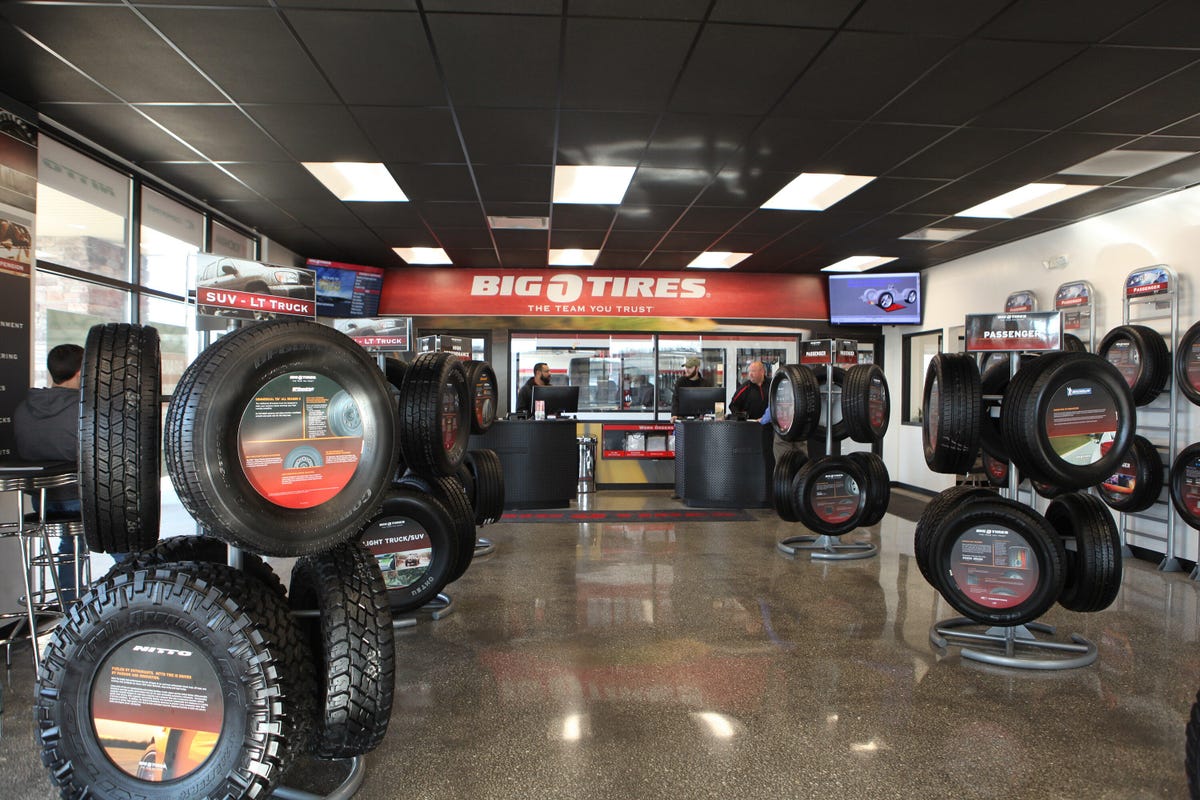Enjoy Big Savings on Discount Tires Morris IL: Shop Now for Bargains
Wiki Article
Tire Solution: Understanding Tire Stress Surveillance Equipments
Understanding Tire Pressure Monitoring Equipments (TPMS) is an essential element of keeping optimum car performance and safety and security when driving. With advancements in vehicle modern technology, TPMS has actually become a conventional function in modern lorries, supplying real-time info on tire pressure degrees. Diving deeper right into the details of TPMS, one can reveal the numerous parts that comprise this system and the relevance of each in making certain accurate tracking. From direct to indirect TPMS systems, the landscape of tire stress surveillance is varied, each with its unique set of benefits and factors to consider. Stay tuned to unravel the intricacies of TPMS, from upkeep ideas to the undeniable benefits of keeping your tires effectively pumped up. discount tires morris il.
Significance of TPMS
The relevance of Tire Stress Monitoring Systems (TPMS) hinges on their capability to boost vehicle security and performance via real-time surveillance of tire stress degrees. Keeping the correct tire pressure is critical for ensuring optimum handling, stopping, and total security of a car. TPMS supplies drivers with immediate feedback on any kind of overinflated or underinflated tires, enabling prompt modifications to be made.
Parts of TPMS
Comprising various essential components, a Tire Stress Monitoring System (TPMS) functions as a sophisticated safety feature in modern automobiles. The main parts of a TPMS include sensing units, a control module, and a warning indication. Sensing units are generally situated in the tire shutoff stem or connected to the wheel setting up, where they measure tire pressure and transfer data to the control component. If it discovers significantly low pressure in any of the tires, the control component procedures this info and causes a caution. The caution indication, often a symbol on the control panel, alerts the chauffeur to check the affected tire or tires. Some advanced TPMS models also show the actual tire pressure analyses for each and every tire, providing drivers with real-time information to guarantee optimal tire efficiency and safety and security. By keeping an eye on tire pressure continually, TPMS aids protect against crashes, decreases tire wear, and improves fuel efficiency, making it a crucial component for car safety and security and efficiency.
Sorts Of TPMS

On the other hand, indirect TPMS relies upon the lorry's wheel speed sensors to keep track of tire stress. This system identifies underinflation by comparing the rotational speeds of the wheels. Indirect TPMS is less costly than straight TPMS, as it uses existing sensing units within the lorry.
While straight TPMS offers much more exact analyses, indirect TPMS is less complex in layout and generally needs much less maintenance. Both systems have their advantages and restrictions, and the selection in between them often depends on factors such as price, vehicle make, and individual choice. Comprehending the distinctions in between these 2 sorts of TPMS can assist automobile owners make educated decisions relating to tire upkeep and safety and security.
TPMS Upkeep Tips
Reliable upkeep of TPMS is essential for ensuring optimal efficiency and security of your car. Frequently checking the TPMS sensing units for any damage or corrosion is crucial. Ensure that the sensors are clean and free from debris that can hinder their performance. In addition, it is recommended to check the sensing unit batteries regularly and replace them as needed to assure accurate analyses. Conduct regular look at the tire stress degrees and contrast them with the TPMS readings to ensure they are consistent. Recalibrate the system following the supplier's guidelines if there are any type of inconsistencies. During tire rotation or substitute, make certain that the TPMS components are handled carefully to protect against any kind of possible damages. If the TPMS alerting light brightens on the control panel, address the problem immediately by checking the tire stress and the total system for any mistakes. By sticking to these maintenance ideas, you can extend the lifespan of your TPMS and my website boost the safety and security of your driving experience.Benefits of Proper Tire Stress
Maintaining proper tire stress, as More hints stressed in TPMS Maintenance Tips, is vital for gaining the various advantages connected with optimum tire pressure degrees. Among the primary benefits of preserving the appropriate tire pressure is improved gas effectiveness. When tires are effectively inflated, there is much less moving resistance, resulting in much better gas economy. In addition, proper tire pressure guarantees even tire wear, extending the life expectancy of the tires and advertising much safer driving conditions. With the ideal tire stress, cars also have much better handling and traction, especially in negative weather. This can improve general driving performance and security for the driver and passengers. Keeping optimum tire pressure can add to a smoother and much more comfortable ride by decreasing resonances and noise triggered by underinflated tires. In verdict, the benefits of appropriate tire stress go beyond simply tire longevity; they encompass enhanced fuel efficiency, enhanced security, far better vehicle efficiency, and overall driving convenience.Verdict
To conclude, understanding tire stress monitoring systems (TPMS) is essential for keeping optimum tire pressure and guaranteeing automobile security. By identifying the relevance of TPMS, being familiar with its elements, knowing the different kinds available, sticking to appropriate maintenance ideas, and understanding the benefits of keeping proper tire pressure, chauffeurs can enhance their driving experience and prolong the life expectancy of their tires. Correct tire pressure is vital to secure and efficient car operation.
Report this wiki page